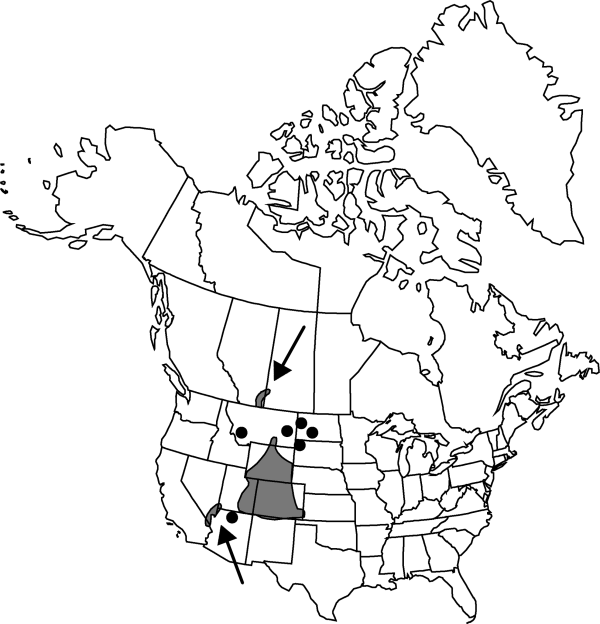Tripterocalyx micranthus
Hooker’s J. Bot. Kew Gard. Misc. 5: 261. 1853.
Stems reddish, glandular-pubescent, ± viscid. Leaves: petiole 1–4 cm; blade lanceovate to elliptic, 1–6 × 0.5–2.5 cm, margins entire or sinuate, ciliate; surfaces short glandular-pubescent, ± viscid, abaxial surface green or glaucous, adaxial surface green. Inflorescences 5–15-flowered; bracts lanceolate to ovate, 3–9 × 1–3 mm, thin and green or ± papery, base ± attenuate, margins glandular-puberulent, often ciliate, or glabrate to lightly glandular-puberulent. Perianth: tube greenish to pink, 6–18 mm, limb greenish to pink, 3–5 mm diam., lobes inconspicuous. Fruits oval to round in profile, 10–20 × 10–20 mm, walls ± spongy on exterior, indurate on interior, ± smooth to rugose; lateral ribs, if extending into wings, only slightly raised; wings (2–) 3 (–4).
Phenology: Flowering spring–fall.
Habitat: Sandy soils, desert scrub, desert grasslands
Elevation: 800-2400 m
Distribution

Alta., Sask., Ariz., Calif., Colo., Kans., Mont., Nev., N.Mex., N.Dak., S.Dak., Utah, Wyo.
Discussion
The names Abronia cycloptera A. Gray and Tripterocalyx cyclopterus (A. Gray) Standley are illegitimate, based on an attempt by Gray to rename A. micrantha Torrey. Gray believed A. micrantha to be a “precociously fertilized state” of what is here recognized at T. carneus.
Selected References
None.
Lower Taxa
"thin" is not a number.